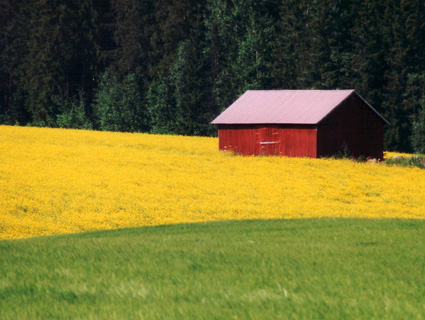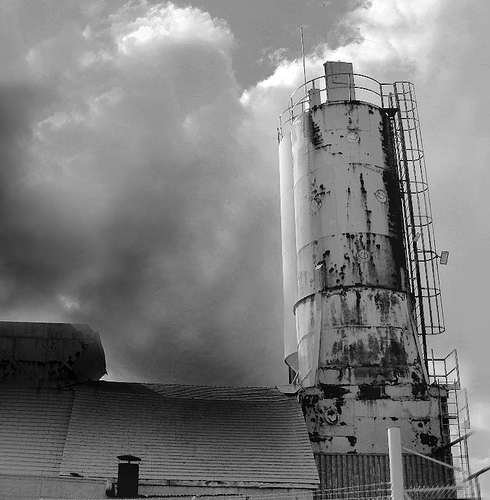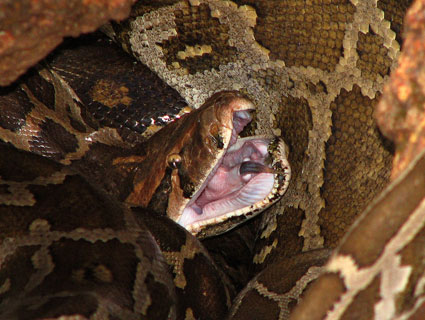
<a href="http://upload.wikimedia.org/wikipedia/commons/d/d5/Field.jpg">Petritap</a>/Wikimedia
Rambunctious Garden
Emma Marris
Bloomsbury
Imagine an untouched stream. If you’re picturing a tortuous channel with high banks, environmental journalist Emma Marris will tell you how wrong you are. Almost everything we think of as natural has been altered by humans, she argues. In the case of the winding stream, the high banks are probably a relic from seventeenth century mill dams, and we have only come to think of them as natural over centuries of environmental amnesia. Marris insists that if nature is impure, this calls for a new approach to conservation.
For her manifesto out this week from Bloomsbury, Rambunctious Garden, Marris trots from Hawaii to Yellowstone National Park to Poland in search of fresh conservation styles. Each spot illustrates a different set of environmental priorities, and Marris uses them to prove one of her central points: that wildly different ecosystem management styles can exist on the same planet. In fact, we need to try strategy we can think of in order to find out what works.
Deep in tourist-tamed Yellowstone, Marris complicates our ideas about preserved wilderness: She finds a park visitor “devouring nature as he polished off a Dairy Queen blizzard. Welcome to Yellowstone, the wildest place in the lower forty-eight.” In wry and vivid descriptions, Marris gives her readers a laugh while grounding her abstract arguments. She shows us how even our paragons of wilderness are tempered by tourists.
Marris also reveals the literary roots of our stubborn ideas about the wild. Henry David Thoreau taught us to make a distinction between city and wilderness from his outpost beside Walden Pond. The problem is, we’ve taken the dichotomy too far. Now, we miss the forest for the trees. Or rather, we miss the urban wilderness for our too-perfect ideas about pristine nature. Contrary to our ideal, it is possible to see nature in our biggest metropolises, “bees whizzing down Fifth Avenue in Manhattan,” if we pay close enough attention.
Jetting to Europe, Marris tours her readers through Bialowieza Forest, a former hunting ground in the 15th century that straddles the Polish and Belgian border. This European Eden shows how managed parks can have an all-too-human history. In World War I, the 580-square-miles of forest swapped hands from Russia to German politician Hermann Goring, who “took it over as his own personal playground.” It came at a high cost, too. He expelled the local villagers in the forest and ordered large numbers of them murdered. “Their corpses were left inside the woods.” Marris uses all her examples to drive her ultimate point: “Our fingerprints are everywhere.”
But Marris doesn’t just dwell in the imperfections of the past. She also offers forward-looking innovations. However, the “novel ecosystems” she extolls are only possible when we broaden our definition of nature to include human interference. In Hawaii, Marris traipses the Big Island’s jungles with an ecology grad student to show us how formerly evil “invasive” plant species can be harmless. There, Marris and the student find “barrels, wire, car parts, and whole burned-out cars,” but they still see the ecosystem as salvageable. They also welcome Australian ironwood, Indian sword ferns, and American trumpet trees—invaders that work together to make a lush ecosystem. “The idea that a bunch of random plants from hither and yon could convincingly impersonate a real ecosystem rather than collapse into species-poor and poorly functioning wastelands has been markedly hard to swallow.”
To help old-school ecologists swallow Marris’ controversial ecosystems, her book borders on repetitive. But her examples drive her point home: No longer should we strive for the impossible ideal of restoring a pristine wilderness. Instead, conservationists should take a grab-bag approach: throw in assisted migration with a touch of park management and urban gardening. “There is no one best goal.” In short, there’s no way to restore an untouched earth, so let’s start touching it in the right ways.
Rambunctious Garden will be released on August 30 by Bloomsbury USA.












